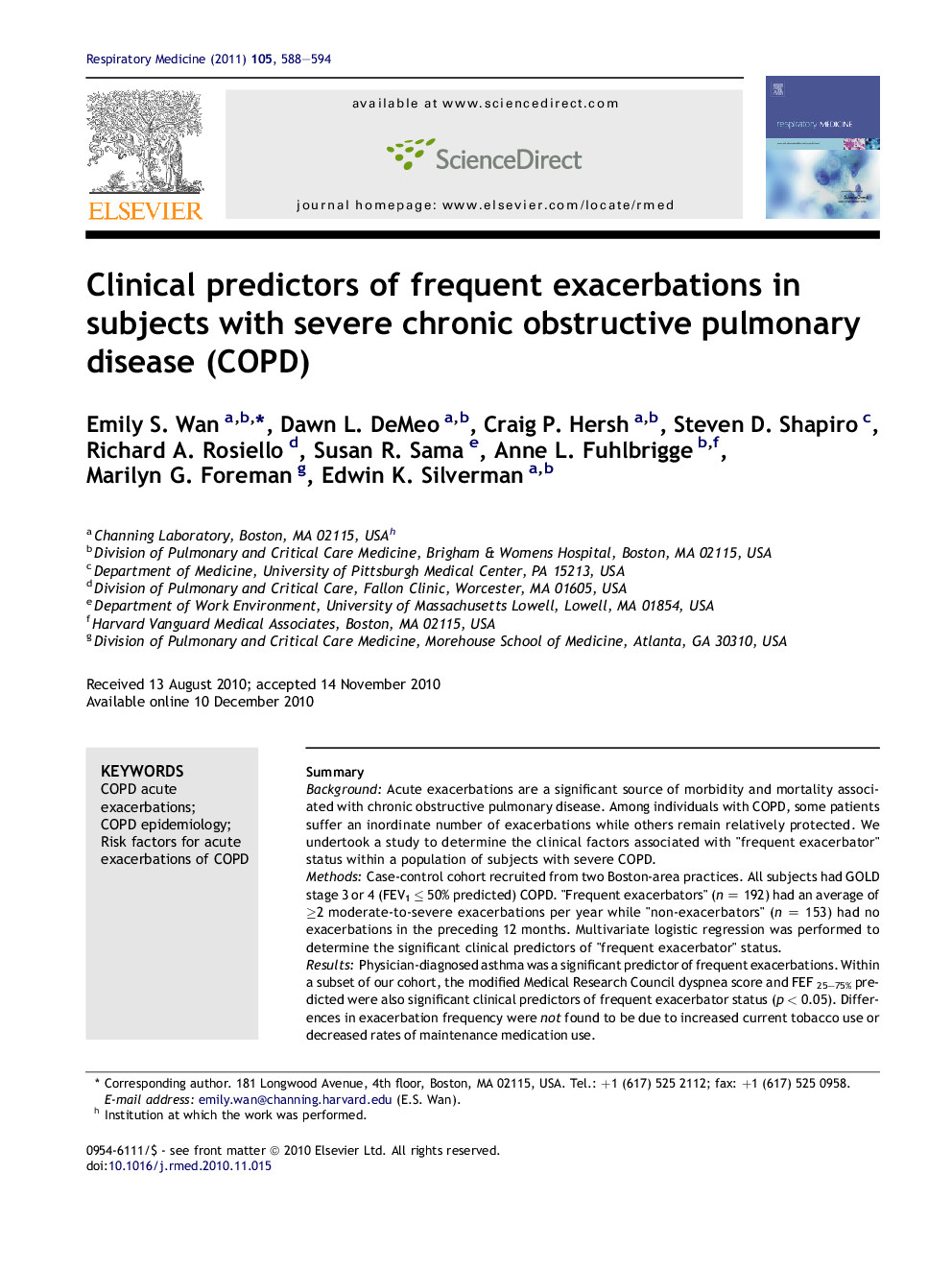| Article ID | Journal | Published Year | Pages | File Type |
|---|---|---|---|---|
| 4211351 | Respiratory Medicine | 2011 | 7 Pages |
SummaryBackgroundAcute exacerbations are a significant source of morbidity and mortality associated with chronic obstructive pulmonary disease. Among individuals with COPD, some patients suffer an inordinate number of exacerbations while others remain relatively protected. We undertook a study to determine the clinical factors associated with "frequent exacerbator" status within a population of subjects with severe COPD.MethodsCase-control cohort recruited from two Boston-area practices. All subjects had GOLD stage 3 or 4 (FEV1 ≤ 50% predicted) COPD. "Frequent exacerbators" (n = 192) had an average of ≥2 moderate-to-severe exacerbations per year while "non-exacerbators" (n = 153) had no exacerbations in the preceding 12 months. Multivariate logistic regression was performed to determine the significant clinical predictors of "frequent exacerbator" status.ResultsPhysician-diagnosed asthma was a significant predictor of frequent exacerbations. Within a subset of our cohort, the modified Medical Research Council dyspnea score and FEF 25–75% predicted were also significant clinical predictors of frequent exacerbator status (p < 0.05). Differences in exacerbation frequency were not found to be due to increased current tobacco use or decreased rates of maintenance medication use.ConclusionsWithin our severe COPD cohort, a history of physician-diagnosed asthma was found to be a significant clinical predictor of frequent exacerbations. Although traditional risk factors such as decreased FEV1% predicted were not significantly associated with frequent exacerbator status, lower mid-expiratory flow rates, as assessed by FEF 25–75% predicted, were significantly associated with frequent exacerbations in a subset of our cohort.
